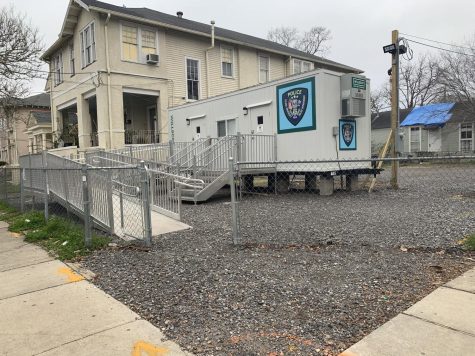OPINION | Crime reports are ineffective, misrepresent community
March 17, 2021

Walking alone down McAlister Drive at dusk, backpack slung over one shoulder, face lit up by the artificial light of an iPhone, Tulane University students rarely pause to consider the infrastructure and personnel tasked by the university with ensuring that this mindless nighttime stroll is safe.
Nonetheless, the Tulane University Police Department is certainly not an inconspicuous presence on Tulane’s campus. With a combined 100 full-time police officers between the uptown and downtown campuses, TUPD is an omnipresent and influential force. As is the case for any group with significant influence and status, TUPD’s systems and efforts are certainly worthy of evaluation and improvement for the benefit of TUPD, students and the community at large.
Despite TUPD’s substantial presence, at least quantitatively, “criminal” behavior and police activity often seem at the forefront of students’ minds and, moreover, the top of their email inboxes. Tulane’s Crime Alert system is a measure that intends to keep students informed of any “criminal” activity, potentially suspicious behavior and reportable inconveniences, such as noise complaints, in and around Tulane’s Uptown and Downtown campuses. As it is defined by the university, the crime reporting system is part of an effort to “better serve our community.”
Considering that the Crime Alert system documents any and all “criminal” activity, issuing alerts via email and text notifications, students are certainly familiar with the TUPD name, perhaps to their own disadvantage. Police activity is documented and relayed to students with a frequency that suggests, perhaps, that “reportable activity” is not adequately deterred by Tulane’s police force. Indeed, if TUPD does feel that it sufficiently fulfills its protective duty then it is being misrepresented and, in fact, undermined by one of its own procedures.
A system designed to keep students informed and vigilant, the Crime Alerts have suffered unintentionally adverse effects. The frequency with which students and Tulane affiliates are notified of criminal activity or suspicious behavior has informed students’ evaluation of the effectiveness of TUPD. The byproduct of diligent, though often incessant, documentation is that students are posited simultaneously as a vigilante, a victim and a bystander — all categorized by paranoia. The effect of such a convoluted position in the complicated system of justice is nullifying. The inability of the system to succinctly define and outline its practical implications for students makes it relatively ineffective.
First, the Crime Alert system has the potential to position students as vigilantes of sorts. In other words, the suspect descriptions included in the reports could potentially cause increased and counterproductive racial profiling. Reading these elements in a crime report can often lead to a misrepresentation of the community we live in and the people around us. In 2016, an app initially called “Vigilante” but renamed “Citizen,” was released in New York City with the intention of helping civilians protect their own safety by keeping them informed of city-wide “criminal” activity. An article in the Philadelphia Magazine explores how this kind of hyper-awareness of police activity involves citizens in a role that is beyond their capacity and incites unfounded and potentially transgressive paranoia.
Faced with a comparable situation to New Yorkers in 2016, Tulane students must consider whether Tulane’s crime reporting system and subject descriptions are protecting them from danger or inadvertently promoting paranoia categorized by inaccurate stereotyping. Without offering students non-police-based solutions, which have been proposed by groups such as Tulane’s Black Student Union, or addressing issues of safety or “reportable” concerns in general, TUPD via the crime reporting system maintains itself without tackling its shortcomings.









Leave a Comment